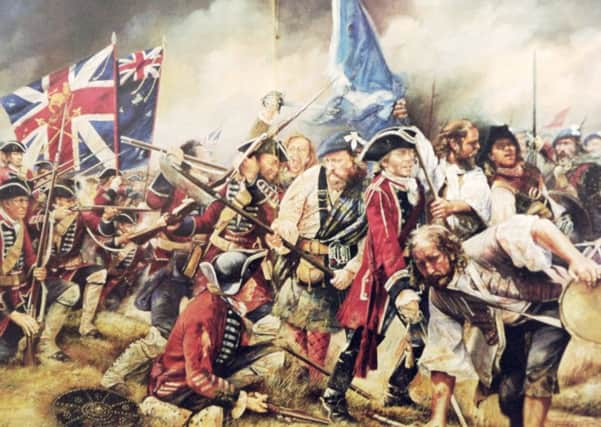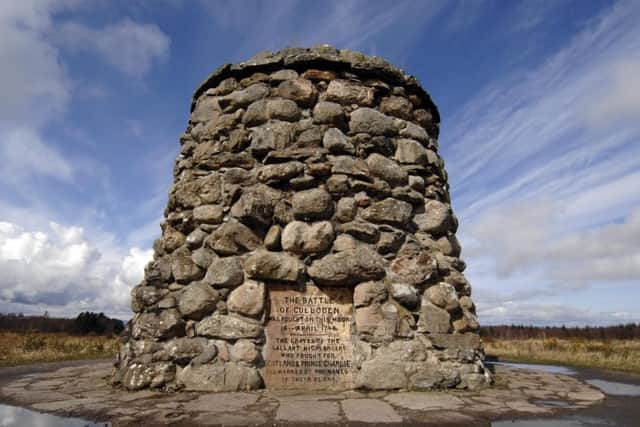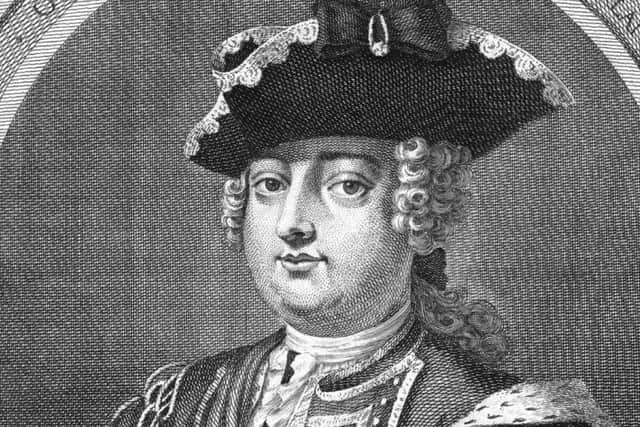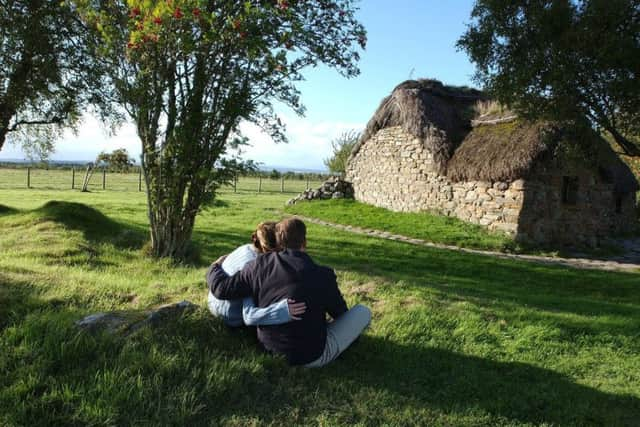Battle of Culloden: myths debunked


FOR many years the Battle of Culloden has been acknowledged as the last of the battles that have disfigured the frequently troubled relationship between England and Scotland.
It was fought by two armies, one led by the Duke of Cumberland on the Hanoverian side (the government or royal army) and the other by Prince Charles Edward Stuart or Bonnie Prince Charlie (the Jacobite or Highland army).
Advertisement
Hide AdAdvertisement
Hide AdContrary to popular belief, not all of the 9000 soldiers in Cumberland’s army were English and not all of the 5000 in the Jacobite army were Scots or even Highlanders, but that did not stop the myth-making.


In time Culloden was personified as a fight between the English and the Scots, or even as a battle involving romantic kilted Highlanders on one side and dastardly red-coated English and Lowland Scots on the other.
Neither is true, but both viewpoints came to be accepted, largely as a result of a deep-seated need to mythologise the former and demonise the latter. As a result ‘Culloden’ became useful shorthand to delineate Scotland’s history in terms of battles fought long ago, such as Bannockburn, a justly famous victory for the Scottish King Robert Bruce over the army of King Edward II in 1314; or Flodden, a disastrous setback two hundred years later when James IV, an otherwise sensible king, led his country’s army to a quite unnecessary defeat at the hands of the English Earl of Surrey on 9 September 1513.
To be fair, modern historians have worked hard and successfully to correct those impressions; most recent accounts of the Battle of Culloden place it firmly within the context of a doomed French-supported rebellion raised in the name of the Catholic Stuarts and aimed at unseating the reigning Hanoverian royal family.
It has also come to be regarded – rightly so – as one of the battles in the contemporaneous War of the Austrian Succession (1740–8), which took its name from the failure of the ruler of the Hapsburg monarchy to father a male heir and involved most of the European powers.


This violent struggle was fought initially in continental Europe, pitting Britain and her allies against the combined forces of France and Spain – both Catholic countries – and the threat of French invasion was rightly feared. It was not simply a religious war, in which Protestant fought Catholic – Britain’s principal ally, Hapsburg Austria, was of the latter persuasion – but as the fighting spread into the Caribbean and North America it gave British foreign policy a religious dimension by stimulating anti-Catholic sentiments.
Prince Charles Edward Stuart was a Catholic and had been supported by King Louis XV of France, albeit somewhat half-heartedly.
Advertisement
Hide AdAdvertisement
Hide AdThe inference was clear: at a time when Britain was engaged in a conflict aimed at suppressing what seemed to be Catholic tyranny, the Jacobites were viewed as part of an international conspiracy in which the Stuart cause was inextricably linked to the global interests of France and her allies.
It was perhaps not surprising that, long fter Bonnie Prince Charlie had arrived in Moidart with his followers during the summer of 1745, the government in London began enforcing long-dormant laws aimed at preventing Catholics from bearing arms, owning horses or gathering in large numbers for worship or other purposes. As one contemporary verse had it, the Catholic Anti-christ had ‘join’d with a Hellish Band of Jacobite Thieves’.


At the time, and in the years following the uprising, the British government was quite sanguine about the fact that within Britain support for the Jacobites had been confined to Scotland and was prevalent mainly amongst the Highland population. That was known and understood, but there had also been widespread fears about the country’s capacity to contain the Catholic threat.
Cumberland’s victory at Culloden eased those concerns by eliminating the Jacobite menace, putting paid to Catholic interference in domestic and foreign policy and thwarting, for the time being, the enemy’s territorial ambitions. With those threats crushed or at least confined to the Scottish Highlands, which would shortly undergo a process of rapid and violent pacification, the government was able to turn its mind to determining the future of British power and to the prospect of expanding its influence in the wider world.
Many of those involved in that imperial process were young officers of the British Army who had learned their trade while serving under Cumberland; as history was to show, they had learned their lesson well.
There was certainly no lack of opportunity for them to hone their military skills. No sooner had the Culloden campaign ended than many were back in action, fighting against the French and their allies in Flanders until the war ended in 1748.


It was only a short respite. Within eight years Britain was to be at France’s throat again, fighting the Seven Years War (1756–63), which forms most of the background for the present book. Not only was this one of the most successful wars ever fought by Britain, but it put paid to French hopes of building a world empire in North America, India and the Caribbean. At the same time a rival British empire was cemented in those same territories and in Britain the Hanoverian dynasty was secured once and for all.
Advertisement
Hide AdAdvertisement
Hide AdThere was to be further fighting between Britain and France in 1778, but that came about as a result of a revolt by the North American colonists who received French support. The final confrontation in 1793–1815 was prompted by the French Revolution and led to the collapse of the French Empire created by Napoleon Bonaparte.
Although the latter two conflicts are not strictly part of the present story, they have been alluded to within the narrative as the lives and careers of many of the participants span all the wars fought against France in the second half of the eighteenth century.
It is a well-attested fact that between the Act of Union, which brought Britain into being in 1707, and the final defeat of Napoleon in 1815, which ended French dreams of imperial domination, the two countries were rarely at peace; and that experience had an impact on the development of the British Army.
Most of the senior officers in the Duke of Cumberland’s army came from English or Irish backgrounds or were Lowland Scots – in other words they were British – and after Culloden many of them went on to enjoy solid and in some cases spectacular careers in the British Army as a result of the patronage of their commanding general.
They were Cumberland’s men and they quickly became an identifiable military grouping within the British Army when they served in the European, North American and Indian theatres of military operations. In the parlance of a later age and usage they belonged to ‘Cumberland’s Ring’.


In so doing they showed that they had learned the lessons of the Jacobite campaign and remembered them in later operations. Perhaps the most pertinent, because it was the most potent, was the value of sustained and disciplined musketry. At Cumberland’s insistence the lines of government infantrymen had been instructed in new drills to counter the ferocious charge of claymore-wielding clansmen when they clashed at Culloden, but it was the unrelenting volleys of rapid and accurate musket fire from the infantrymen which won the day.
Backed by artillery the tactics soon became a battle winner, as was made evident during the later Battles of Minden and the Plains of Abraham, two of the most successful set-piece battles (from a British point of view) of the Seven Years War. Equally, in the counter-insurgency phase which followed Culloden, battalion commanders used tactics which would be employed later against native American allies of the French in the fighting in North America – displacing the population and destroying their property as part of a group punishment for supporting the opposition.
Advertisement
Hide AdAdvertisement
Hide AdAlthough they are to be deplored and achieved nothing other than alienation and a long-lasting bitterness, such tactics were not untypical of the period. However, more astute commanders came round to the belief that in warfare of that kind the population had to be won over.
During the post-Culloden period there was considerable discussion about the value of using the army as a force for good in restoring order and obliterating the root causes of rebellion. But the main characteristic that unites the officers in the Cumberland Ring is that, like all good soldiers, they learned from their experiences in the Jacobite campaign, profited from them and put them to good use in the Seven Years War, especially in the fighting in North America and India which gained Britain its first empire.
Culloden by Trevor Royle is published by Little Brown, read more here.